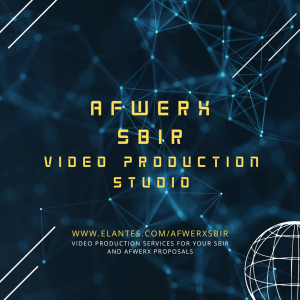5 Steps to Winning a Small Business Innovation Research (SBIR) Award
SBIRs and STTRs are highly competitive with awards going to an average of 15% of applicants. In this article, we cover 5 steps to winning a SBIR/STTR.
ARLINGTON, VA, UNITED STATES, December 16, 2022 /EINPresswire.com/ -- ARLINGTON, VA, Dec. 16, 2022 – The Small Business Innovation Research (SBIR) and Small Business Technology Transfer (STTR) program supports small businesses to conduct government research and development projects with the potential for commercialization. With grants reaching 100K for Phase 1 awards and 750K for Phase 2 awards, SBIRs/STTRs support small businesses to reach their technological potential and provide the opportunity to profit from its commercialization. SBIRs and STTRs are highly competitive with awards going to an average of 15% of applicants. In this article, we cover 6 steps to winning a SBIR/STTR.1. Thoroughly research the history of the topic
Virtually all SBIR topics are one to two years in the making. A need is identified by the PM office and a PI is assigned to manage the topic. Next, a series of approvals are needed to officially release the funding opportunity. Lastly, the SBIR topic is published, and companies are invited to submit their proposals. Understanding the core need that the SBIR is addressing is important to properly address it in your proposal. It is also a key component in selecting potential subcontractors with situational experience relevant to the topic.
2. Avoid wired SBIR topics
In some cases, a competing small business has introduced/marketed a technology concept to the sponsoring agency. This usually occurs when a business has an unproven technology that could benefit the agency. Rather than do an outright contract and deploy the technology, the agency will create an SBIR topic to conduct tests to determine applicability. In these cases, the process of receiving and reviewing applications is a mere formality and the chances of any outside vendors receiving the SBIR is practically zero. There are many ways to screen for these types of SBIRs in the topic write up including the level of detail in the project description, specific recommended/required technologies, and other requirements that serve to discourage applications.
3. Set up a meeting with the SBIR Program Manager
SBIRs differ from traditional government contracts in that vendors are encouraged to speak with the program manager prior to submitting a proposal. This is an incredible opportunity to test the level of interest of your SBIR approach and make changes if necessary. You can also feel out if the topic is “wired” as described in the previous section. Lastly, you can use the meeting to demonstrate “likability” and “reliability” as a potential SBIR grant holder in the program manager’s portfolio. Keep in mind, if your SBIR is a success, the program manager will share in the credit as they will have project ownership from the agency perspective.
4. Use video to demonstrate your approach and product benefits
Many SBIR topics (i.e. AFWERX) are requiring video as part of a proposal. Video offers the ability to visually demonstrate the product attributes, benefits, situational applicability, and scalability in a relatively short period of time. The video serves as an introduction to the approach/technology and invites the program manager to review the rest of your proposal with increased interest. Keep in mind that the video is a representation of your company and should be produced with that in mind. Investing in detailed animations and live action sequences will have payoffs when it comes to the evaluation of your proposal.
5. Partner with a University
SBIRs allow for up to 33% of funding to go to a non-small business entity. Universities are a strong choice for SBIR teaming for many reasons. First, they have facilities and resources they can add to your research that you most likely do not have. Second, professors and heads of departments are hungry for funding to push forward their areas of research and development and will enthusiastically support your proposal and eventual project if awarded. Third, Universities have access to students and interns to do some of the grunt work for no or minimal cost. Lastly, the University name will lend credibility to your proposal, especially if you have never worked with the agency.
For more information, visit www.elantes.com or contact Adam Ishaeik at (703) 869-5109 or aishaeik@elantes.com.
Adam Ishaeik
Elantes
+ +1 7038695109
email us here
Visit us on social media:
Other

